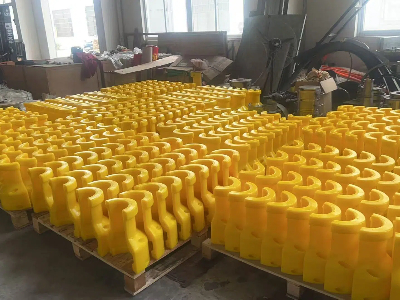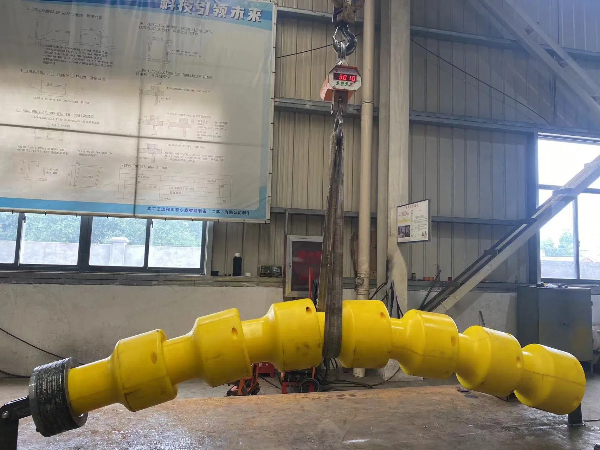What Is the Production Process of Polyurethane Bend Limiters
Polyurethane bend limiters are essential components in offshore and subsea systems, preventing flexible pipes, umbilicals, or cables from bending beyond their minimum radius. These protectors ensure long-term structural integrity. But how are these high-performance components made? Here’s a closer look at the step-by-step production process.

1. Material selection and formulation
Production begins with selecting high-performance polyurethane. Formulations vary by environment, tailored for:
Shore hardness (A or D)
Saltwater and UV resistance
Mechanical strength and flexibility
Temperature and pressure tolerance
The precise mix of polyols, isocyanates, and additives ensures optimal balance of rigidity and elasticity.
2. Design and mold fabrication
Each limiter is designed based on cable size, bend radius, and load conditions. Engineers model interlocking segments in CAD software. Once approved:
Precision molds (aluminum or steel) are fabricated.
Mold cavities define the external shape, cable channel, and mechanical stop features.
3. Polyurethane casting or injection molding
Depending on volume and part size, polyurethane is processed via:
Open casting: Heated resin is poured into molds, ideal for large or low-volume parts.
Injection molding: Resin is injected under pressure, suited for high-volume, consistent production.
Molds are cured under controlled conditions to ensure solidification and minimal internal stress.
4. Curing and demolding
After casting, molds remain heated to complete curing. Once solid:
Segments are demolded carefully.
Excess material is trimmed to produce clean edges.
Curing determines final mechanical performance—proper timing ensures optimal underwater durability.
5. Machining and quality inspection
Post-processing includes:
CNC machining for bolt holes, grooves, and alignment features.
Dimensional checks for diameter, thickness, and symmetry.
Hardness, compression, and bending tests to meet design requirements.

6. Assembly and packaging
Most bend limiters consist of modular segments. These are:
Pre-assembled or delivered as loose components.
Labeled for correct installation order.
Packed securely to prevent damage in transit.
Producing polyurethane bend restrictors involves material science, precision molding, and strict quality control. Their role in protecting subsea cables and risers is vital to ensuring safe, long-term operation in harsh marine environments.
With custom hardness, geometry, and strength options, polyurethane bend restrictors remain a trusted solution in subsea engineering.




